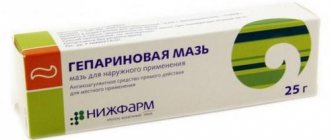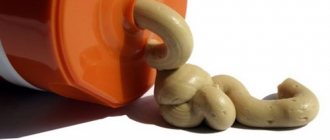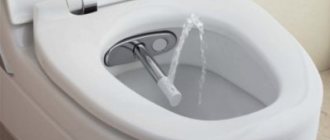Hemorrhoids are a common pathology of the venous cavities of the lower intestine. Discharge from the anus with hemorrhoids is rarely encountered as the initial symptom of the disease. Proctologists from their practice have noticed that almost all patients with discharge have other inflammatory diseases or tumors of the colon. In other words, it can be assumed that hemorrhoids are secondary.
A similar symptom is observed with prolapsed rectum, Crohn's disease, solitary ulcer, genital warts, irritable bowel syndrome, and ulcerative colitis. If the patient notices mucus, pus or blood in the stool or underwear, the doctor must investigate, establish the cause and begin treatment.
How do weeping hemorrhoids manifest?
When the typical symptoms of hemorrhoids are dominated by weeping due to constant discharge, then all the symptoms worsen. In the area of the anus and on the inner surface of the buttocks, the skin becomes irritated, covered with shallow ulcers (macerates), and painful cracks.
Patients experience significant discomfort due to burning and itching in the area of external inflammation. The feeling of dull pain inside the anus takes second place.
Often the discharge has an unpleasant odor. Wet underwear must be changed during the day and pads must be used. Inconveniences increase the general symptoms of the disease: irritability, insomnia, lack of appetite, shyness, and a desire to avoid public places.
Discharge after surgery
What kind of discharge may appear after surgery to remove hemorrhoids? What may cause concern after hemorrhoid removal? In severe cases of the disease, surgery is the main method of treatment. Chronic diseases are characterized by a long recovery process and are often accompanied by complications or long-term rehabilitation during surgery.
After removing nodes, you may experience:
- Blood mixed. Bleeding of varying intensity is often observed immediately after surgery. This is due to difficulty defecating. The patient, experiencing a psychological barrier, cannot go to the toilet normally. The accumulation of stool contributes to the development of new constipation. Solid feces injure the intestinal mucosa and the site of removal of the node. It is important to follow a strict diet while in hospital to avoid further complications.
- Bleeding. It can occur if the site of the hemorrhoid is not cauterized well enough. In such cases, the unpleasant symptom is eliminated by inserting cotton swabs soaked in medications into the anus.
Purulent discharge after surgery to remove hemorrhoids indicates the presence of complications - Ulcers. After removal of hemorrhoids, they may appear due to the ingress of feces during the operation. This leads to the development of pathogenic microflora. Purulent processes are accompanied by unpleasant discharge. Doctors prescribe antibiotics. If the suppuration is extensive, drainage is used to remove fluid from the intestines.
What are the types of discharge in pathology?
Under normal conditions, impurities come out through the anal canal only at the time of defecation along with feces. Pathology of the large intestine is accompanied by disruption of the closing sphincters and inflammation of the hemorrhoids, which provide additional tightness. Therefore, fluid can leave the rectum even outside the act of defecation.
Intestinal diseases are characterized by abdominal pain, diarrhea or constipation, and bloating. In the mechanism of formation of liquid components, the stage of hemorrhoids and the degree of enlargement of internal hemorrhoids are important. Any discharge indicates the need to determine the cause. Sometimes food allergies, the type of diet of an adult, or enzymatic digestive insufficiency are of direct importance.
Obstruction of the outflow of venous blood leads to sweating of the liquid part through the wall of the node. The inflammatory reaction is accompanied by the production of serous or purulent exudate. Over-irritation of the glands in the mucous membrane causes excessive mucus production. Damage to the nodes and inner wall of the intestine by hard fecal stones, deep ulcers disrupt the integrity of the vessels, which is manifested by bleeding.
If the patient has colorless, transparent discharge in moderate quantities and without odor, then it is assumed that there are no complications, the early stage of hemorrhoids. With cloudy, thick impurities, there is no doubt about the presence of a pronounced inflammatory process.
The appearance of copious mucus and blood impurities is considered a previous sign of hemorrhoidal rupture and requires urgent treatment. With purulent greenish inclusions in brown stool and a fetid odor, the inflammatory process is assumed to transfer to surrounding tissues and the development of paraproctitis.
What are the prerequisites for the occurrence of purulent hemorrhoids?
The inflammatory process in the anus is not always purulent. It is accompanied by the following negative processes in the body:
- Thrombosis of the node. Without treatment, the hemorrhoid becomes inflamed. Tissue swelling appears in the area of the passage. The node is festering. A blood clot forms, which causes swelling to spread to the nearest skin and groin area. Over time, tissue necrosis rapidly develops in the area where hemorrhoids appear.
- Purulent paraproctitis is a severe inflammation in the rectum. The intestinal microflora is disrupted. This leads to dangerous inflammatory processes. Anal fissures can also cause the development of unfavorable processes in the intestinal area. Paraproctitis with purulent discharge does not occur independently, but is always a consequence of a chronic disease.
Pus from the anus appears not only due to suppuration of hemorrhoids. Other diseases may also be characterized by this symptom:
The appearance of pus during hemorrhoids indicates serious concomitant disorders that require immediate treatment.
- Ulcerative colitis is an acute course of inflammatory processes in the gastrointestinal tract. Along with pus, bloody discharge is also observed.
- Tumors in the rectum.
- Pararectal fistulas. In this case, the pus does not come out of the anus, but from the fistula, which forms behind the nodes.
- Complication after operations in the anal and intestinal areas. Suppuration can cause feces to enter the place where the operation took place.
Reasons for the development of discharge with an unpleasant odor
Typically, feces in an adult have a faint, unpleasant, but characteristic odor. In infants, it has a sour aroma due to the fermentation of lactic bacteria. The feces of people whose diet contains a lot of onions and garlic, seasonings, cabbage, legumes, fatty meat, and preservatives are of a sharper quality.
The smell of uncomplicated hemorrhoids is determined by the same properties. In the case of putrefactive inflammation (paraproctitis), decomposition products of pathogenic microorganisms, decaying tissues, and dead local immune cells enter the hemorrhoidal discharge. They give the smell a stench.
People who are diligently treated with folk recommendations at home are especially frightened. They need to keep in mind that medicinal products such as honey, citrus fruits, and milk can cause a severe allergic reaction from the intestines. In addition to diarrhea and excess mucus, a rather unpleasant odor appears. The intestine fights foods that are inconvenient for it, cleanses itself of allergens, toxins, and waste.
Foul-smelling discharge accompanied by high fever is a common symptom of intestinal infections. Irritation of hemorrhoids enhances the pathology. Mushrooms and toxins secreted by worms that parasitize the intestines have a similar property.
Treatment of hemorrhoids and its consequences
Hemorrhoidal complications are much more difficult to treat than the initial stage of the disease. If you notice signs of irritation or pain during bowel movements, you should consult a specialist. Initial forms of hemorrhoids can be cured using more gentle methods:
- increased physical activity;
- a specially selected diet;
- warm baths with medicines;
- taking mild laxatives.
Regular hygiene procedures are also important to maintain healthy microflora. After each bowel movement, use soft wipes and damp toilet paper. Take cool showers if possible. Severe inflammation is treated only in a hospital, and purulent processes are often removed surgically.
In parallel with traditional medicine, folk methods are used:
- the outflow of pus will occur much faster when using salt baths;
- decoctions of chamomile and calendula have an anti-inflammatory effect;
- excess mucus can be removed using microenemas with herbal decoctions;
- Drinking plenty of water will relieve constipation.
loading…
loading…
Author: Alina Pavlovna Sidoruk
Education Voronezh State Medical Academy named after N.N. Burdenko (2002) Internship in the specialty "Surgery", First Moscow State Medical University named after. THEM. Sechenov (2003) Residency…
Source: VseProGemorrhoy.ru
Can hemorrhoids fester?
At the first signs indicating the appearance of hemorrhoids, you should immediately contact a medical specialist, due to the fact that the disease develops quickly, and the consequences of lack of proper exposure can result in serious complications, one of the types of which may be an abscess.
Pus in hemorrhoids, its discharge, can be caused either by the occurrence of a blood clot in the node, or by paraproctitis (suppuration of the flesh near the rectum), in addition, the symptoms are related to some other serious diseases. It is worth noting that the formation of a small amount of mucus for the gastrointestinal tract is normal. When it begins to appear in the stool, it is a sign of incipient inflammation.
The main reasons for the problem include low physical activity, overeating spicy foods, addiction to fast food, alcohol, among other things, women are at risk. Every second woman in labor has encountered this problem. You can determine the first signs of the disease yourself by the following symptoms:
As soon as symptoms of hemorrhoids appear, it is necessary to consult a doctor, as this disease progresses rapidly and, if left untreated, can lead to dangerous complications.
- sensations of pain and discomfort in the rectum and anus;
- inflamed walls of the rectum provoke the production of mucus that is released from the anus and irritates the skin, causing itching and burning;
- The most common sign of hemorrhoids is blood. The discharge may be insignificant and appear immediately after the act of defecation. The development of the disease provokes an increase in the amount of blood in the stool, and it can also flow or collect in drops after defecation;
- the early stages of the disease may be accompanied by prolapse of hemorrhoids, provoked by strong straining during bowel movements, in this case the nodes will fall into place on their own. As the problem develops, you will need to contact a doctor to eliminate the prolapse of nodes; it is usually impossible to cope with the problem on your own.
If you detect even one of the symptoms indicating hemorrhoids with pus, immediately visit a specialist for medical help. Many patients, due to the sensitivity of the problem, ignore the need to visit the hospital until the last minute and do not begin to treat it. When the disease becomes painful and serious, the person who applies may already have many complicating factors. It is also important to remember that pus-containing discharge from the anus can be a consequence of not only the named disease.
Hemorrhoids occur as a result of an inactive lifestyle, obesity, abuse of spicy and unhealthy foods, and alcohol.
The most common cause of purulent anal discharge is the formation of a blood clot in the hemorrhoidal node, as well as paraproctitis, a disease that provokes an inflammatory process in the perirectal tissue.
- Delaying the moment of contacting a proctologist entails an aggravated chronic form of the disease - thrombosis of hemorrhoids. When a blood clot appears in the anus, severe swelling forms, which, if not properly treated, can spread to the groin area and also move through the subcutaneous tissue. In the future, this complication leads to necrosis, which contributes to the formation of purulent paraproctitis.
- When microflora mixes on the intestinal walls, in the tissues located near the rectum, an inflammatory process begins to occur, which is called purulent paraproctitis. The disease can be caused not only by the formation of a blood clot in hemorrhoids, but also by the appearance of anal fissures. Paroproctitis never occurs on its own, but always acts as a complication of other diseases.
Most often, if there is hemorrhoids that are not treated, purulent paraproctitis occurs
. It is important to remember that not only hemorrhoids can be the root cause of the appearance of pus in the anal discharge. It can accompany other, no less serious pathologies that require urgent medical intervention:
- Pus, accompanied by ichor and blood discharge, can form during the active phase of exacerbation of ulcerative colitis or an inflammatory process in the intestinal mucosa. And also due to Crohn's disease and inflammation in the gastrointestinal tract;
- Both malignant and benign neoplasms can occur in the final section of the large intestine. They provoke the appearance of purulent-bloody discharge;
- Hemorrhoids can close the passages of pararectal fistulas, from which pus is released, entering the patient’s anus;
- In addition to diseases, purulent discharge is possible due to some complication after surgical removal of hemorrhoids. Harmful microflora contained in the feces enters the wound and suppuration begins.
Having discovered purulent discharge from hemorrhoids in the stool, you should immediately seek help from a medical institution, and not self-medicate. The consequences of not properly addressing symptoms can lead to even greater complications.
The patient does not always contact the doctor in the early stages, since the problem is very delicate
In accordance with the clinical picture of the disease, purulent discharge can be either part of the mucous membranes or the main one, mixed with blood and mucus. If the main symptoms are present, the pathology is often accompanied by other signs:
- in the initial stages of cancer, erroneous urge to defecate or tenesmus may be observed;
- around the anus there is a softening of the upper layer of the skin, called maceration. The process is accompanied by discomfort and pain. The skin becomes covered with ulcers, cracks and erosions. You can see what the symptom looks like on the Internet.
It is impossible to delay the treatment of the disease due to the fact that the disease, which is easily eliminated in the early stages, in its advanced form results in serious complications. Purulent hemorrhoids are dangerous because the discharge can spread to the pelvic area. Patients who are embarrassed to contact doctors with such a delicate illness begin to self-medicate with folk remedies, which, to a greater extent, eliminate only the manifestations, namely pus from hemorrhoids. It is worth emphasizing that only traditional methods, supported by folk recipes, can give the maximum effect in getting rid of hemorrhoids.
During drug therapy for hemorrhoids, venotonics and angioprotectors are prescribed, which normalize the tone of the hemorrhoidal veins and strengthen their walls.
In classical medicine, treatment occurs in two ways, with the use of special antibacterial drugs and ointments aimed at relieving inflammation, as well as through surgery.
During surgery, the doctor opens and cleans out the formed abscess. The patient experiences a decrease in body temperature and signs of intoxication. Afterwards, another operation is performed - the festering node in which inflammation has arisen is removed. Fistulas formed during the chronic form of paraproctitis are also eliminated surgically, otherwise relapses and oncology development are possible. After removing hemorrhoids, you must strictly follow the instructions of the specialist.
Traditional medicine offers the following methods to cure purulent hemorrhoids:
- holding sitz baths with salt aimed at treating discharge and relieving pain. In 5 liters of boiled water you need to stir soda, sea salt and regular salt, 1 tbsp each. spoon. The course is designed for 15 baths lasting 10 minutes. In addition, you can use decoctions of medicinal herbs;
- Enema in small volumes will help get rid of mucus and pus from inflammation of the anal veins. Sage, yarrow and chamomile 1 tbsp each. spoon into a container, pour boiling water over it and leave for 30 minutes. Dissolve 2 tbsp in 200 ml of the prepared solution. spoons of honey and immediately before going to bed, carry out a cleansing procedure. Fresh calendula flowers are also used to treat the disease. For 1 glass of hot water you need 20 g of flowers, leave for 2 hours, express and enema.
Hemorrhoids, as well as paraproctitis, can be healed with the help of various medicinal herbs
Traditional healers are convinced that the use of these methods will help get rid of hemorrhoids, but it is worth remembering that the removal of symptoms will not stop the nodes from festering. Only classical medicine allows us to influence the root cause of the disease and eliminate it.
If a disease is detected and there is frequent pus-containing discharge, doctors will recommend the patient to reconsider the daily diet. Changing your diet and following a diet are an integral part of the process of treating the disease:
- Every day before meals, drink half a glass of juice made from red rowan berries, and use the cake as a compress.
- Eat boiled beets on an empty stomach.
- If you have problems with bowel movements, a glass of carrot juice drunk on an empty stomach will help. You can make tea from the tops, but it is important that there are no contraindications.
- If constipation, bleeding or purulent discharge occurs, drink 1 glass of sauerkraut brine three times a day.
When diagnosing any stage of the disease, the patient must refrain from drinking alcoholic beverages, spicy and spiced foods; foods that have been smoked or pickled are also prohibited. The consumption of fresh fruits and vegetables, fermented milk products, cereals and lean meat is allowed.
Cure of purulent hemorrhoids is possible only with timely consultation with a specialist, compliance with all instructions and monitoring the state of your health. It is important to understand that treatment of the disease in the early stages is much easier than in advanced forms, so you should not be afraid of going to the hospital.
source
Pus from hemorrhoids is a common and frequent complication. Discharge is especially noticeable during the act of defecation; it comes out of the anus before and after feces. Sometimes blood and pus appear with hemorrhoids; such fluids are noticed both regularly during bowel movements and spontaneously. Purulent hemorrhoids are a consequence of the appearance of thrombosis in the nodes or the result of the presence of paraproctitis (pus affects the tissue around the intestine). The symptom indicates a dangerous human condition and requires timely treatment.
Hemorrhoids with pus are a clear symptom of inflammation in the intestines. The disease has characteristic sensations:
- pain syndrome;
- burning;
- severe itching;
- swelling of the hemorrhoidal area;
- discharge of fluid from the anus.
Hemorrhoids can cause purulent discharge of various compositions.
When a blood clot forms in the area of the hemorrhoid or suppuration of the tissues surrounding the rectum, purulent hemorrhoids occur
Depending on the form of the disease, the affected area and the cause of the disease, there are different forms of hemorrhoids:
- by localization: acute: subcutaneous, retrorectal and submucosal;
- chronic, according to the location of the focus: front, side and back.
- acute: simple, anaerobic, after injury and specific;
- simple;
Not in all cases, hemorrhoids fester; inflammation can occur in a simple form and cause a minimal amount of negative effects.
Hemorrhoids with suppuration are formed due to 3 main conditions:
- the presence of a thrombus in the node. If treated, discharge from hemorrhoids begins only after the inflammatory process worsens. Swelling in the rectal area gradually increases and an abscess appears. The development of inflammation leads to the formation of a blood clot, which contributes to the appearance of swelling in the nearby area. Necrosis and festering hemorrhoids soon appear;
The appearance of such a pathology indicates the presence of severe inflammatory processes in the rectum
- paraproctitis in purulent form. Refers to inflammation in the intestines, but in a complicated form. When the disease appears, the quality of the microflora of the stomach and intestines is disrupted. Soon the prerequisites for the appearance of acute and severe forms of inflammation appear;
- anal fissures trigger processes with negative consequences for the intestines. Purulent discharge from hemorrhoids does not appear for no reason; they are complications from the long-term chronic course of the disease.
The discharge of pus is not always provoked by suppuration of the nodes; there are other disorders in the body that provoke a similar condition.
Purulent discharge and hemorrhoids can provoke the following conditions:
- Ulcerative colitis is an acute inflammation localized in the gastrointestinal tract. The disease is often accompanied by patches of blood in the mucus;
- the presence of tumors regardless of their quality;
- fistula of the perirectal space. Pus is not released from the anus, but through the fistula. It can be seen just behind the nodes;
- negative reaction of the body to surgery performed in the rectal area or intestines. This is a dangerous condition because the pus from hemorrhoid removal leads to the opening of the area where the operation was performed. Feces with all dangerous microorganisms can enter the site of the intervention, which creates a risk of various complications.
The disease is a consequence of a passive lifestyle, excess body weight, consumption of large amounts of junk food, alcoholic beverages, etc. Hemorrhoids appear in half of all women after childbirth.
Discharge from hemorrhoids - symptoms:
- discomfort in the hemorrhoidal area;
- burning and itching are manifestations of mucous secretions that have an irritating effect on the skin. The appearance of fluid is a consequence of the inflammatory process in the walls;
- bleeding occurs in most cases of the disease. It can be almost invisible, and given the appearance of fluid only after bowel movements, blood may not be noticed. To determine the presence of blood clots, you need to examine the surface of the stool. In some cases, drops or stream may appear after defecation;
- nodes falling out. Initially, the symptom becomes noticeable only with severe stress, often with constipation. Over time, loss occurs every time you have a bowel movement, and then for no apparent reason or with minimal exertion. At the initial stages, the nodes do not require reduction; they return on their own. If the condition worsens, you have to contact a specialist for adjustment.
If the listed symptoms appear, perhaps some of them, you need to contact a proctologist. The delicacy of the problem leads to embarrassment for some patients, which is why people often seek help in the later stages of the disease. As it progresses, the risk of complications increases.
The disease manifests itself as pain, burning and itching in the anus
The appearance of paraproctitis can be provoked by the general condition of the body or illness. Among the main causes and risk factors:
- decreased immune function;
- exhaustion of the body;
- chronic pathologies;
- infectious diseases of the gastrointestinal tract in chronic or acute form;
- frequent diarrhea or constipation;
- proctological diseases: simple hemorrhoids, fissure, papillitis, proctitis, cryptitis.
Pus from hemorrhoids can also mask other diseases that affect the intestines.
An abscess with hemorrhoids should be treated only under the supervision of a proctologist. With timely treatment, a specialist will help prevent complications and speed up recovery. Based on what pus looks like in hemorrhoids, you can learn about the involvement of other organs and the degree of neglect of the condition. As the source of inflammation spreads, the pelvic organs are involved in the pathological process. For men, the most common lesion is the urinary canal, and for women - the vaginal area.
source
There is no point in delaying visiting a proctologist if you have obvious symptoms of rectal disease. Often, self-medication and measures taken at the wrong time lead to the appearance of purulent hemorrhoids (paraproctitis). Dealing with a serious illness is difficult, especially since it is accompanied by severe pain.
Purulent hemorrhoids can be chronic or acute. Symptoms for both diseases can differ radically.
Signs of acute paraproctitis:
- First of all, the patient will be identified with all signs of the inflammatory process. Increased body temperature, joint pain, lack of appetite, problems with the natural passage of urine and feces.
- With a subcutaneous abscess, swelling, severe redness, and thickening of the tissue appear in the problem area. The pain may not allow the patient to sit; if pressure is applied to the area, the discomfort intensifies.
- A purulent formation under the mucosa does not have such a pronounced pain syndrome. There is also no high temperature. The abscess ruptures into the rectum.
- The pelvic-rectal form is dangerous because the symptoms are almost no different from any infectious diseases. Often, before seeing a doctor, the patient self-medicates for a cold, mistakenly assuming it is present.
- With the ileo-rectal type, symptoms can be detected only after a week. The buttocks will become different sizes, and the area in the affected area will become inflamed and red.
- Necrotizing paraproctitis is recognized as the most dangerous form. The patient's skin may turn blue, blood pressure decreases, and soft tissue dies. The patient receives severe intoxication, accompanied by severe pain.
Signs of chronic paraproctitis:
- painful sensations during bowel movements;
- itching and irritation in the area of the anus;
- purulent and fecal discharge from the fistula tract;
- constant inflammatory process
- presence of a fistula.
Each type of paraproctitis has its own characteristics, which are used to diagnose the disease. Moreover, each course of purulent hemorrhoids has its own types.
Acute paraproctitis can be:
- Submucosal, retrorectal, pelviorectal, subcutaneous and ochiorectal. Separation occurs depending on the location of the purulent abscess.
- Ordinary, traumatic, anaerobic or specific. Determined by etiology.
Chronic paraproctitis is also called rectal fistula, and it comes in several subtypes:
- Simple or complex, classification based on severity.
- Posterior, lateral, anterior, determined by the location of the internal abscess.
- Complete, incomplete, internal or external, depending on the anatomical principle.
Today, among the proctologist’s patients, there are many women with this problem. This is due to the fact that they have a great love for tight-fitting outfits, as well as thong panties made of thick fabrics.
The main factors that influence the occurrence of purulent hemorrhoids are:
- poor nutrition;
- lack of active movements;
- problems with stool;
- infectious problems of the digestive system;
- pathological phenomena of proctology.
The only effective way is considered to be an operation that will eliminate paraproctitis of any course. During surgery, it is recommended to use full anesthesia.
Complete recovery of the patient is possible if the purulent formation was opened with
its subsequent drainage. To ensure that the infectious process does not spread further, the surgeon will have to excise the crypt with the inflammatory process.
It is noted that in medical practice radical measures are rarely taken. Most often, the purulent formation is opened and drainage is installed. Because of this, there is a high risk of fistula formation and relapse of the disease.
In case of a chronic course of the disease, the patient is indicated for antibiotic therapy after surgery. The presence of infiltrates implies physical treatment.
There are situations when a surgical solution to the problem is not indicated due to personal reasons. Then patients seek to help themselves at home. If the disease does not develop into an acute form, then traditional medicine recipes can bring relief.
It should be taken into account that in the early stages, it is possible not to open the purulent formation with the help of a medical professional. Some recipes allow the abscess to release itself. The main thing is to see your proctologist for an examination so that he can assess the current situation. Typically, the doctor treats the wound, removes secretions, and administers therapy to prevent the formation of a fistula.
Traditional medicine involves treating purulent hemorrhoids with an enema, a medicinal bath and herbal teas.
There are effective solutions for a healing bath:
- 2 onions and 4 cloves of garlic are poured with 2 liters of warm milk. The mixture is boiled for 5 minutes, then cooled to room temperature. When using this decoction for a bath, the patient's body should be kept warm.
- 10 tablets are dissolved in a glass of clean boiled water mumiyo. The finished liquid is filtered and added to 5 liters of warm water.
- 5 liters of distilled water, to which a tablespoon of salt and soda . 15 procedures are enough to achieve a therapeutic effect. After taking a therapeutic bath, you need to apply an ointment prescribed by the proctologist, usually ichthyol.
Tampons that need to be soaked in a special decoction also provide benefits for the patient. You can also introduce liquid using a microenema. For it you will need juice from high-quality and peeled potatoes ; 1 tablespoon is needed for 1 procedure. The course lasts 10 days, manipulations are carried out before bedtime.
To get rid of the cause of the disease - cryptitis, sphincter paresis is required. To achieve the goal, the specialist performs a posterior sphincterotomy, in which the affected area is dissected. If the walls of the rectum have obvious defects, then it makes sense to use the ligature method for treating purulent hemorrhoids.
Opening an abscess involves making a semilunar incision, which should be
extended on both sides. After this, an ellipsoidal incision is required closer to the rectum to achieve excision of the defective sinus. Externally, through the incisions made, a ligature is placed into the rectum. Laying is done along the midline in front or along the back of the anal canal. After which the thick ligature is tightened.
After a few days, the ligature cuts through some of the sphincter fibers and is tightened again. The procedure requires regular repetition, contributing to the elimination of the fistula, but there is no violation of the closing ability of the sphincter.
Elastic type ligatures are used more often, as they destroy the sphincter fibers over a longer period of time. This has a positive effect on the treatment and the final result.
source
Hemorrhoids are a pathology that, in the absence of effective therapy, can cause the development of dangerous complications. One of these unpleasant consequences is purulent hemorrhoids , which is accompanied by discharge from the anus. The appearance of purulent exudate during the disease is a sign of dangerous inflammatory and infectious processes progressing in the rectum. This pathology is characterized by severe pain and requires mandatory consultation with a specialist.
At first, hemorrhoids occur latently without the appearance of pronounced symptoms and develop against the background of other pathologies of the digestive system. The disease does not occur on its own, but is always a consequence of some pathology. At first, the patient experiences minor discomfort in the anal area, and the act of defecation is disrupted.
In the absence of effective therapy, hemorrhoids move to the next stage with the release of drops of blood. It is at this stage of pathology that many patients seek advice from a specialist with complaints about their health. Therapy involves proper nutrition, maintaining a healthy lifestyle and taking medications. If the patient ignores the symptoms and does not seek medical help, hemorrhoids become chronic.
The following factors can cause pus in hemorrhoids:
- improper and irrational nutrition;
- passive lifestyle;
- bad habits;
- pathologies of the digestive system;
- intestinal dysbiosis;
- frequent stressful situations;
- increased physical stress on the body.
The presence of pus in hemorrhoids is considered a dangerous symptom, and if it occurs, you should consult a doctor as soon as possible. Under no circumstances should you self-medicate, as there is a high risk of further deterioration of your health. Purulent hemorrhoids have a wave-like character, that is, exacerbation of the pathology is replaced by periods of remission. Discharge from the anus mixed with blood is the main manifestation of the complication. Purulent exudate indicates that infectious and inflammatory processes are progressing in the intestines.
Paraproctitis is characterized by the appearance of the following symptoms:
- burning and itching sensation in the anus;
- painful act of defecation;
- discomfort during and after bowel movements;
- pain in the intestines;
- rise in body temperature;
- the appearance of pus mixed with blood.
With a pathology such as purulent hemorrhoids, the patient has problems with bowel and bladder emptying. In addition, there is loss of nodes and their swelling, as well as the formation of bumps outside and inside. With purulent hemorrhoids, general intoxication of the body appears, that is, general weakness, nausea and headache.
For purulent hemorrhoids, surgery is performed under general anesthesia in several stages. Initially, therapy is selected using antibacterial, anti-inflammatory and antifungal agents. The course of treatment is 14 days and if there is no positive dynamics, the patient undergoes surgical intervention.
Important! The choice of certain medications is determined by the degree of pathology, the area of localization of the abscess and other factors. It is important to remember that all medications for purulent hemorrhoids should be taken only as prescribed by a doctor.
Complete recovery of the patient is possible with removal of the abscess followed by drainage. Medical practice shows that this method is used extremely rarely today. In most cases, the abscess is opened and drainage is installed. This procedure is dangerous because there is a high risk of fistulas and relapse. After surgical treatment, a course of antibacterial therapy with potent medications is usually prescribed.
Taking medications causes destruction of intestinal microflora. Reduces the body's protective functions and creates favorable conditions for the progression of the disease. It is for this reason that, simultaneously with taking basic medications, the use of drugs whose action is aimed at improving intestinal microflora is indicated.
The most effective among them are:
Treatment of purulent hemorrhoids involves taking vitamin complexes to increase immunity, homeopathic remedies and medicinal tea.
If the pathology has not become acute, you can alleviate the condition with folk recipes. The fact is that at the very beginning of purulent hemorrhoids there is no need to open the purulent formation through surgery. Some traditional medicine recipes help the abscess to come out on its own. It is allowed to resort to the help of non-traditional means only after preliminary consultation with a specialist.
Treatment of purulent hemorrhoids can be carried out with the help of enemas, medicinal baths and tea from medicinal herbs.
Procedures can be carried out using the following solutions:
- You need to pour 4 cloves of garlic and 2 onions with two liters of warm milk. The resulting mixture should be simmered for 5 minutes, then cooled to room temperature. When using this decoction for baths, the patient's body should be kept warm.
- It is necessary to dissolve 10 tablets of mumiyo in 200 ml of warm water. The resulting solution should be filtered and diluted in 5 liters of water.
- You can relieve pain and eliminate inflammation using a product prepared from 5 liters of water with the addition of soda and salt. To obtain a pronounced therapeutic effect, 15 procedures are required.
After taking baths with folk remedies, it is necessary to apply ichthyol ointment or another remedy prescribed by a doctor to the inflamed area of the anus.
Tampons that are pre-impregnated with a medicinal decoction give a good effect in the treatment of purulent hemorrhoids. In addition, liquid can be injected into the rectum in the form of microenemas. It is necessary to peel the potato, squeeze the juice out of it and administer it before bed.
You can get rid of purulent hemorrhoids due to inflammation of the anal veins by enema in small volumes. It is necessary to pour a tablespoon of chamomile, yarrow and sage into a container and pour boiling water over them. The resulting mixture should be left for half an hour, after which 20 ml of honey should be dissolved in 200 ml of the product. The cleansing procedure must be done immediately before going to bed.
When diagnosing a pathology such as purulent hemorrhoids and constant discharge mixed with pus, the patient will have to change his diet.
A special diet is part of complex therapy and includes compliance with the following rules:
- every day before meals you need to drink ½ glass of juice from red rowan berries or use it to make compresses;
- You should eat boiled beets on an empty stomach;
- if you have problems with bowel movements, you can drink a glass of carrot juice before meals or make tea from the tops;
- For constipation, discharge of blood and pus from the anus, it is recommended to drink 200 ml of sauerkraut brine 3 times a day.
Regardless of what stage of purulent hemorrhoids was detected in the patient, he will have to give up alcoholic beverages. In addition, spicy, smoked and pickled dishes with a lot of spices are prohibited. It is recommended to fill your diet with fresh fruits and vegetables, dairy products, cereals and lean meats.
After surgery to remove purulent formations, discharge of various types may appear. Patients are advised to follow the rules during the rehabilitation period and take measures to prevent the appearance of pus after removal of the nodes.
After the operation, you should adhere to a certain regimen:
- Engage in special physical therapy. Do not forget that after surgery to remove hemorrhoids, you should avoid any physical stress on the body. Exercise therapy can consist of several simple exercises, which can improve blood circulation in the intestines and pelvic organs.
- Taking mild laxatives. When treating purulent hemorrhoids, it is best not to take tablet forms of drugs, but to eat laxative products. After surgery, it is not recommended to perform a bowel movement without laxatives. Because pushing can cause wounds, which leads to infection and the development of an inflammatory process.
Purulent hemorrhoids are a dangerous disease that requires long-term treatment. It is important to diagnose the disease as early as possible and begin effective therapy. If you notice purulent discharge from hemorrhoids in the stool, you should seek medical help as soon as possible and not self-medicate.
source










